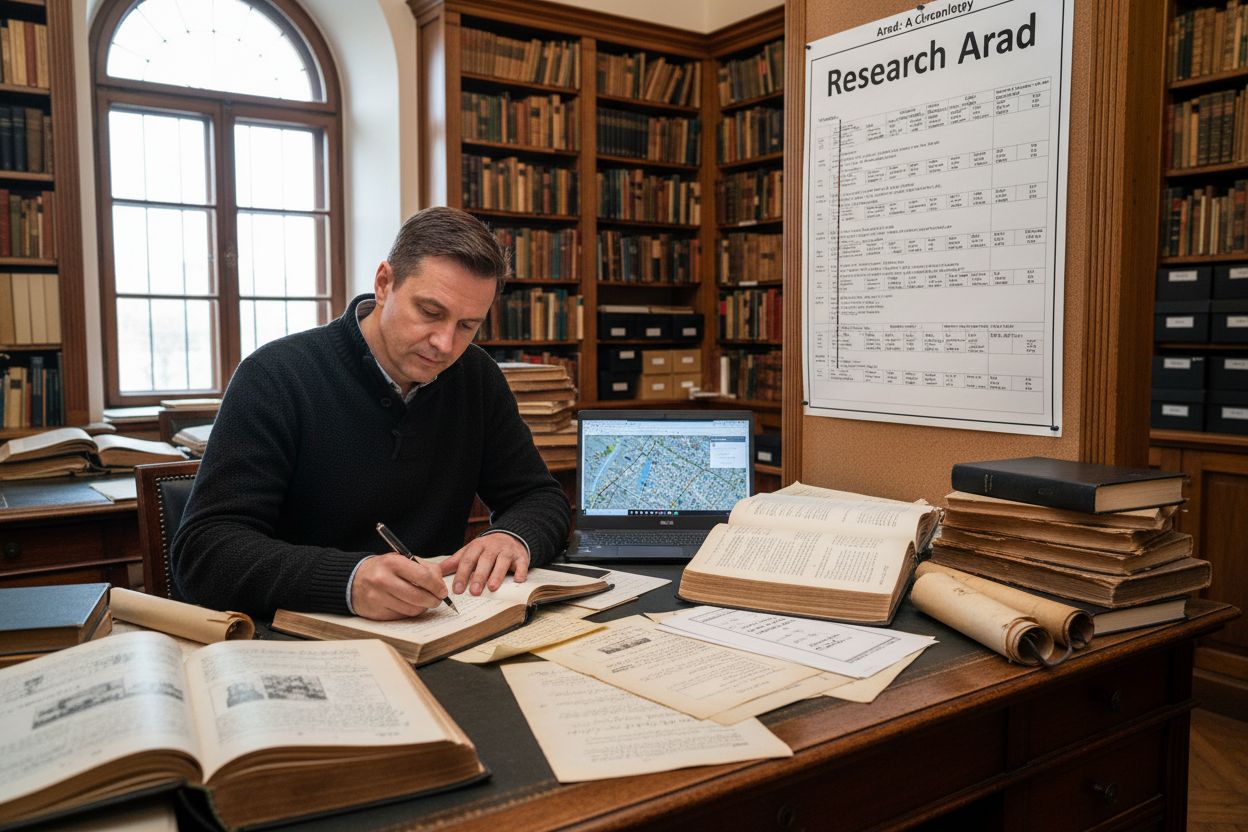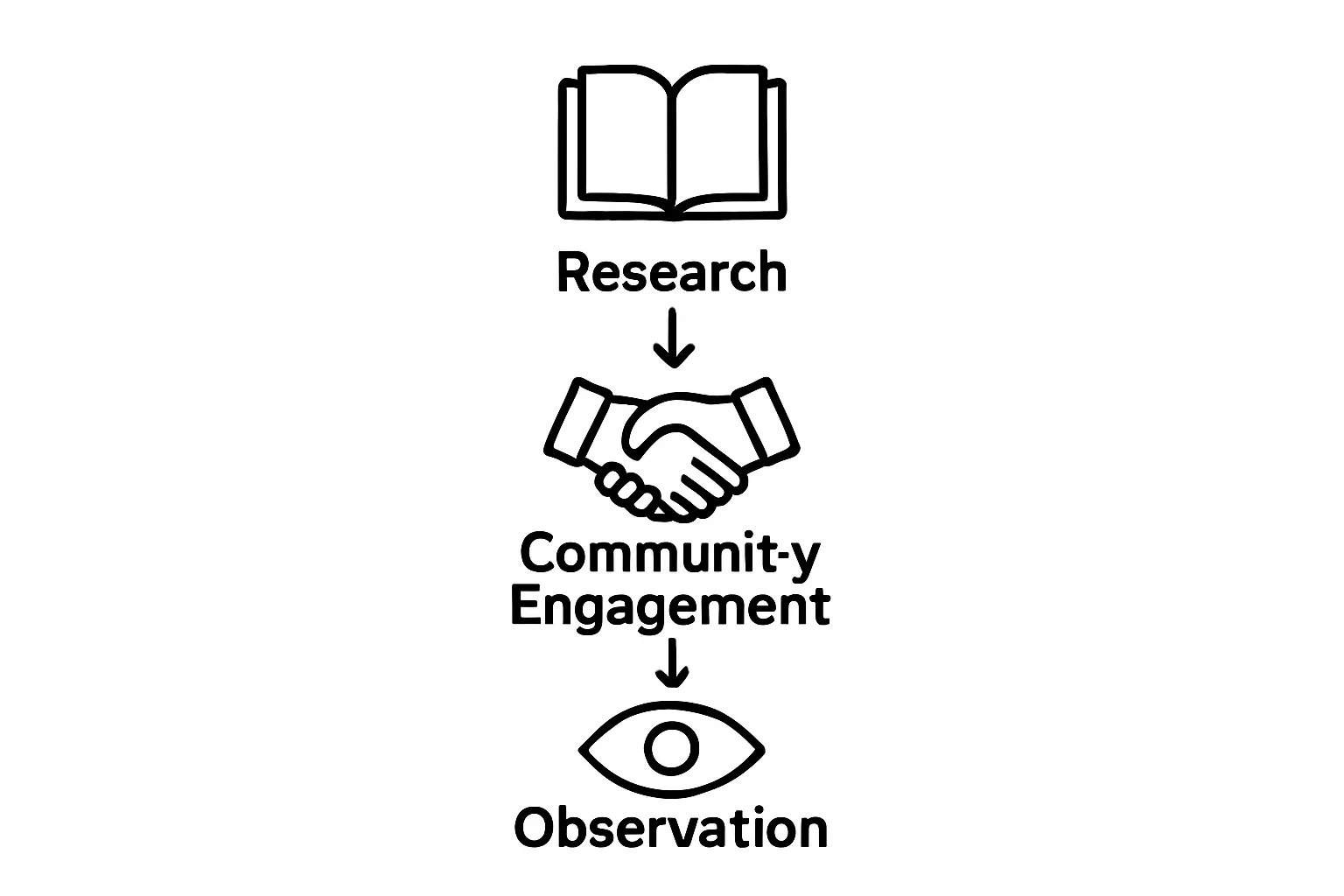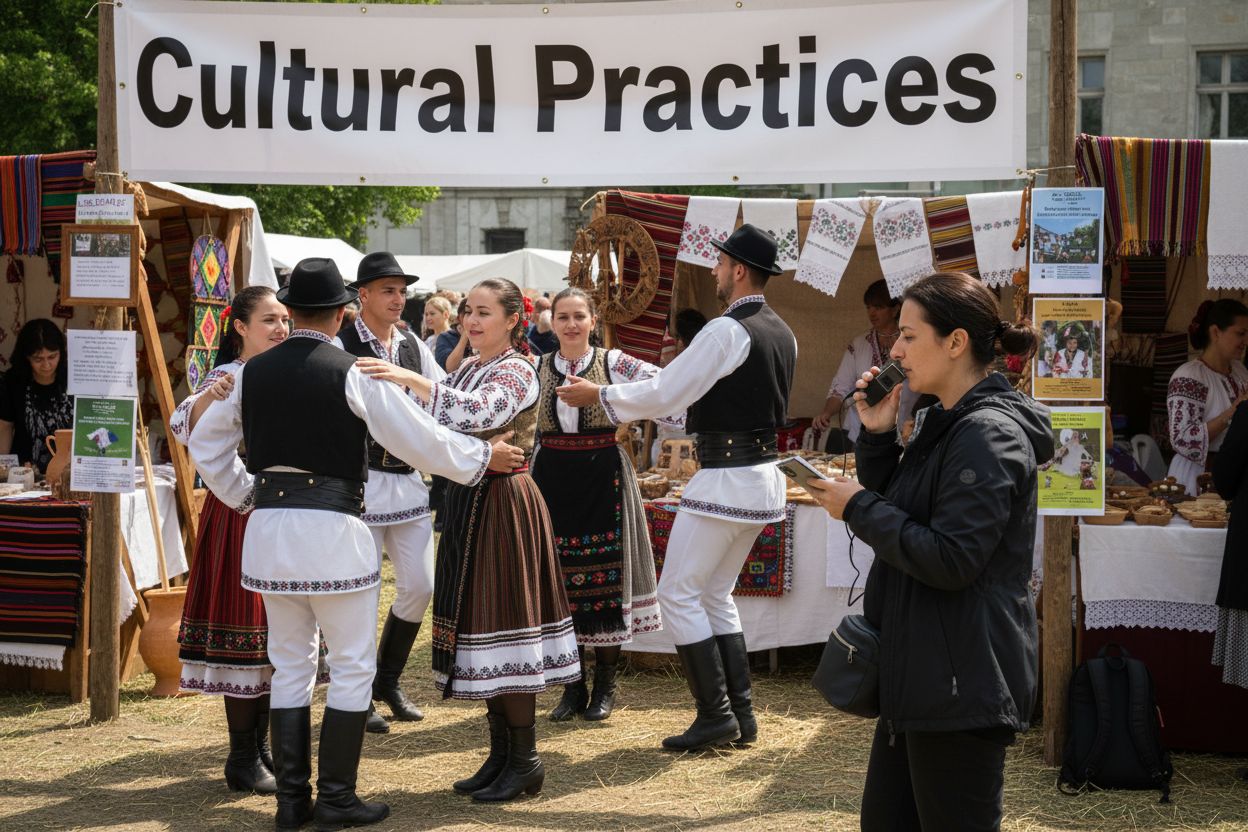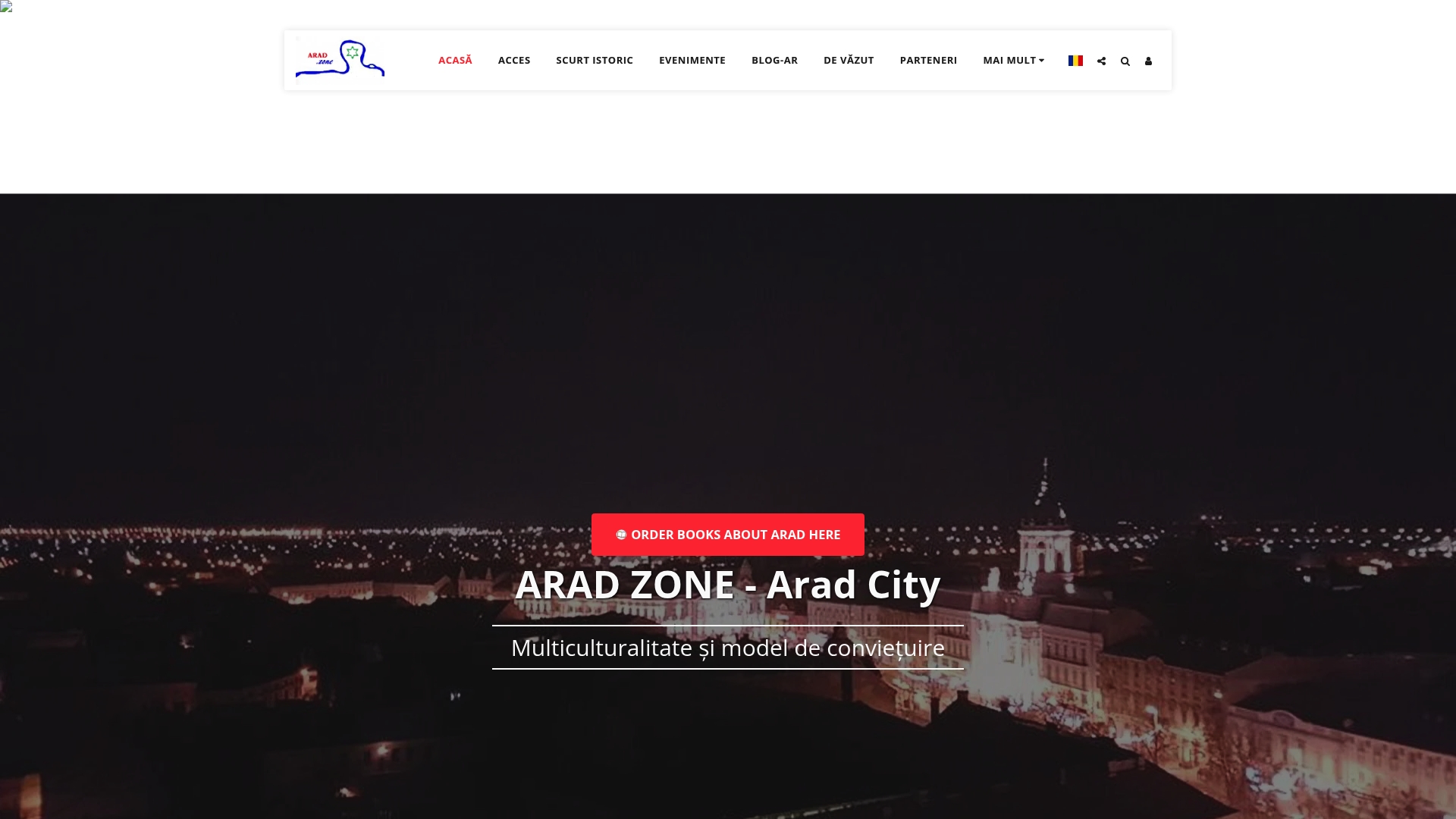How to Analyze Arad Culture: A Step-by-Step Guide
- Arad Zone
- Oct 3
- 9 min read

Arad’s culture is a tapestry woven from centuries of migration, imperial rule, and multicultural exchange. You might expect a small city to have a simple backstory, but Arad’s identity has been shaped by the profound impact of the Ottoman and Austro Hungarian Empires and the influence of four different languages. The most surprising part is that some of the richest insights come not from dusty archives, but from live music, street festivals, and everyday conversations happening now on its streets.
Table of Contents
Quick Summary
Key Point | Explanation |
1. Conduct thorough historical research | Explore primary sources to uncover Arad’s multicultural heritage and its development under various empires. |
2. Engage with local cultural practices | Observe and participate in local traditions to gain deeper insights into community identities and interactions. |
3. Build connections through language skills | Learning basic Romanian, Hungarian, and German enhances interactions and shows respect for local culture. |
4. Document findings systematically | Use a structured approach to record observations, interviews, and cultural expressions for later analysis. |
5. Analyze data to reveal cultural patterns | Categorize and compare collected data to identify significant cultural themes and their historical influences. |
Step 1: Research Arad’s Historical Context
Understanding Arad’s historical context provides the critical foundation for a comprehensive cultural analysis. This initial research step will help you uncover the complex layers of social, economic, and cultural influences that have shaped Arad’s unique identity throughout centuries.
Begin by exploring primary historical sources that document Arad’s multicultural heritage. Academic libraries and regional historical archives are exceptional resources for discovering authentic documents and scholarly research. Focus on tracing the city’s transformative periods under different imperial administrations, particularly the Ottoman and Austro Hungarian Empires, which significantly influenced its cultural development.
When conducting your research, prioritize sources that offer nuanced perspectives beyond standard historical narratives. Learn more about Arad’s historical significance by examining scholarly works, archaeological reports, and comprehensive regional histories. Pay special attention to demographic shifts, migration patterns, and cultural interactions that have contributed to Arad’s distinctive social fabric.
Critical research strategies include consulting multiple linguistic sources. Since Arad has been part of different administrative regions, exploring documents in Romanian, Hungarian, German, and Serbian can provide richer insights into its multicultural heritage. Academic journals, local museum archives, and regional historical publications often contain invaluable contextual information that mainstream sources might overlook.
Successful historical research requires patience and systematic documentation. Create a structured research journal documenting key findings, interesting historical references, and potential connections between different historical periods. This approach will help you develop a comprehensive understanding of how historical events have sculpted Arad’s cultural landscape.
Key verification criteria for completing this research step include:
Compilation of at least 5-7 credible historical sources
Detailed notes on major historical periods affecting Arad
Identification of significant cultural transformations
Clear timeline of demographic and administrative changes
By meticulously researching Arad’s historical context, you will establish a robust foundation for deeper cultural analysis in subsequent research steps.
Below is a checklist table to help you verify completion of each research and analysis step described in the guide.
Step | Verification Criteria | Evidence to Document |
Step 1: Research Historical Context | 5-7 credible sources, major periods, cultural transformations, demographic timeline | Research journal with notes, timeline chart |
Step 2: Identify Key Cultural Elements | 3-5 practices, notes on interactions, interviews, photo/video documentation, linguistic/artistic compilation | Interview transcripts, event photos/videos |
Step 3: Engage With Local Communities | 5-7 substantive conversations, field notes, consensual documentation, cultural understanding, listening ability | Permission forms, detailed conversation notes |
Step 4: Observe Practices & Traditions | 3-5 event notes, visual/audio documentation, reflective analysis, contextual understanding, ethical technique | Field journal entries, observation sketches |
Step 5: Analyze Collected Data | Thematic mapping, 3-5 patterns, critical interpretation, context connections, multiple perspectives | Thematic maps, analytical memos |
Step 2: Identify Key Cultural Elements
Identifying key cultural elements represents a crucial phase in understanding Arad’s complex societal fabric. This step transforms your historical research into a tangible exploration of the city’s living cultural landscape, moving beyond documented history to recognize the dynamic expressions of community identity.
Begin by immersing yourself in direct cultural observations. Local festivals, traditional crafts, linguistic practices, and community gatherings offer profound insights into Arad’s cultural essence. Explore more about Arad’s unique cultural identity through active engagement with local communities, museums, and cultural institutions.
Pay special attention to the intricate multicultural dynamics that define Arad. The city’s historical positioning at the crossroads of different empires and ethnic groups has created a rich tapestry of cultural interactions. Romanian, Hungarian, German, and Serbian influences intertwine to produce a unique social environment that requires nuanced understanding.
Conducting interviews with local residents, cultural practitioners, and community elders can provide invaluable qualitative insights. Focus on understanding how traditional practices, language, culinary traditions, and social customs have evolved over generations. Documentaries, oral histories, and local art forms serve as powerful windows into the community’s collective memory and ongoing cultural negotiations.
Visual and performative arts represent another critical domain for cultural analysis. Traditional music, dance, theatrical performances, and visual art forms communicate complex cultural narratives that written records might not capture. Museums, cultural centers, and local art galleries can help you decode these symbolic expressions of community identity.
Key verification criteria for completing this cultural identification step include:
Documentation of at least 3-5 distinct cultural practices
Detailed notes on multicultural interactions
Recordings or transcripts of community interviews
Photographic or video documentation of cultural events
Compilation of linguistic and artistic expressions
Successful identification of key cultural elements requires patience, respect, and an open mindset.

Approach each observation as an opportunity to understand the nuanced ways communities construct and communicate their collective identity.
Your goal is not just to catalog cultural elements but to comprehend their deeper significance and interconnectedness.
Step 3: Engage with Local Communities
Engaging with local communities transforms your cultural analysis from an external observation to an immersive, participatory experience. This critical step allows you to move beyond academic research and connect directly with the lived experiences of Arad’s residents.
Language preparation becomes your first strategic approach**. Developing basic conversational skills in Romanian, Hungarian, and German will significantly enhance your ability to build genuine connections. Local language learning demonstrates respect and opens doors to more meaningful interactions. Consider taking short language courses or using language exchange platforms to develop your communication skills before arriving in Arad.
Learn more about Arad’s multicultural interactions to understand the nuanced communication dynamics. Community engagement requires more than linguistic skills. Approach interactions with genuine curiosity, deep respect, and a willingness to listen. Avoid preconceived assumptions about cultural practices and remain open to diverse perspectives.
Develop a strategic approach to community interactions. Local community centers, cultural associations, and neighborhood gatherings provide excellent opportunities for authentic conversations. Religious institutions, craft workshops, and traditional festivals serve as powerful entry points for understanding community dynamics. Always seek informed consent and respect individual boundaries when conducting interviews or participating in community events.
Documentation becomes crucial during community engagement. Carry a notebook or digital recording device to capture insights, but always ask permission before recording conversations. Ethical research practices demand transparency about your intentions and potential use of shared information. Create a comfortable environment where community members feel safe sharing their experiences.
Key verification criteria for successful community engagement include:
Minimum of 5-7 substantive conversations with diverse community members
Detailed field notes capturing cultural insights
Respectful and consensual documentation of interactions
Evidence of cultural understanding beyond superficial interactions
Demonstrated ability to listen and learn from community perspectives
Remember that community engagement is a privilege, not a right. Approach each interaction with humility, recognizing that your role is to learn and understand rather than to judge or analyze. Your goal is to create meaningful connections that provide genuine insights into Arad’s rich cultural landscape.

Step 4: Observe Cultural Practices and Traditions
Observing cultural practices and traditions represents a nuanced art of understanding Arad’s social landscape beyond textual documentation. This step transforms your research into a living, breathing exploration of community dynamics and inherited cultural expressions.
Systematic observation requires developing a structured yet flexible approach. Position yourself as a respectful participant-observer, carefully documenting traditional ceremonies, seasonal festivals, religious rituals, and everyday social interactions. Explore Arad’s cultural practices with an open and empathetic mindset, recognizing that cultural traditions are complex, evolving systems rather than static representations.
Prioritize direct observation during significant community events. Religious holidays, wedding ceremonies, agricultural festivals, and local commemorations offer rich opportunities to understand cultural nuances. Pay attention to subtle communication patterns, non-verbal interactions, generational differences in practice, and the underlying social meanings embedded in traditional performances.
Documentation becomes crucial during observational research. Develop a comprehensive field journal that captures not just external actions but also emotional and contextual details. Sketch visual representations, record brief audio notes, and create detailed written descriptions that capture the sensory and emotional dimensions of cultural practices. Always seek permission before photographing or recording events, respecting community privacy and cultural sensitivities.
Recognize that cultural practices are dynamic and context-dependent. Avoid romanticizing or oversimplifying traditions by understanding their complex historical and contemporary manifestations. Observe how younger generations reinterpret traditional practices, how migration and technological changes influence cultural expressions, and how local communities negotiate cultural continuity and transformation.
Key verification criteria for successful cultural observation include:
Comprehensive field notes documenting at least 3-5 distinct cultural events
Visual and audio documentation with proper community consent
Reflective analysis of observed cultural practices
Evidence of understanding contextual meanings beyond surface-level descriptions
Demonstration of respectful and ethical observational techniques
Remember that observing cultural practices is a privilege that demands intellectual humility and genuine curiosity. Your goal is not to judge or categorize but to understand the intricate ways communities create, maintain, and evolve their cultural identities.
Step 5: Analyze Collected Data and Insights
Analyzing collected data and insights transforms raw observations into meaningful cultural understanding. This critical step synthesizes your historical research, community interactions, and cultural observations into a coherent narrative that reveals the intricate dynamics of Arad’s cultural landscape.
Systematic categorization becomes your primary analytical tool. Begin by organizing your collected materials methodically. Create digital or physical folders that segment information into distinct categories such as historical context, linguistic practices, social interactions, traditional ceremonies, and generational variations. Explore deeper analytical techniques to ensure comprehensive data interpretation.
Develop a robust thematic analysis framework that identifies recurring patterns and interconnections across your collected data. Look beyond surface-level descriptions to uncover underlying cultural mechanisms. Examine how historical experiences shape contemporary social practices, how different ethnic groups negotiate cultural boundaries, and how individual experiences reflect broader community narratives.
Utilize comparative analysis techniques to understand Arad’s cultural uniqueness. Compare your findings with regional cultural studies, examining similarities and differences with neighboring communities. This approach helps contextualize Arad’s cultural practices within broader regional and historical frameworks. Pay special attention to how migration, economic changes, and technological transformations influence cultural expressions.
Technological tools can enhance your analytical process. Digital qualitative data analysis software allows sophisticated coding and pattern recognition. Spreadsheets, mind mapping tools, and data visualization platforms can help transform complex cultural observations into comprehensible insights. However, remember that technology supports rather than replaces nuanced human interpretation.
Key verification criteria for successful data analysis include:
Comprehensive thematic mapping of collected research
Clear identification of at least 3-5 significant cultural patterns
Critically reflective interpretation of observed phenomena
Evidence of connecting individual experiences to broader cultural contexts
Demonstration of multiple analytical perspectives
Remember that cultural analysis is an iterative process. Your initial interpretations will likely evolve as you develop deeper understanding. Approach your analysis with intellectual humility, recognizing that cultural complexity resists simplistic explanations. Your goal is to illuminate the rich, multifaceted nature of Arad’s cultural identity.
This overview table summarizes each step of the Arad culture analysis process, including the main task, estimated effort level, and expected outcome.
Step | Main Task | Effort Level | Key Outcome |
1 | Research historical context | Moderate | Comprehensive timeline and understanding of cultural influences |
2 | Identify key cultural elements | High | Detailed record of living cultural practices |
3 | Engage with local communities | High | Substantive insights from resident perspectives |
4 | Observe practices and traditions | Intensive | Rich documentation of traditions and behaviors |
5 | Analyze collected data and insights | Moderate | Synthesized cultural narrative and identified patterns |
Unlock Arad’s Cultural Secrets and Make Your Analysis Count
Are you finding it tough to navigate Arad’s complex history or struggling to identify authentic cultural practices? This step-by-step guide highlights just how daunting it can be to move from academic research to meaningful community engagement. If you want to go beyond scattered information and truly reveal the heart of Arad’s multicultural heritage, you need reliable sources and real local stories.

Experience Arad culture like never before. At Arad.zone, you gain access to curated books, blog insights, and firsthand stories that bring context to your cultural analysis. Deepen your understanding with our dedicated guides on Arad’s history or explore how Arad’s unique identity continues today. Stop piecing together fragments and start building your analysis on a solid foundation. Visit Arad.zone now and enrich every step of your cultural exploration with expert resources and authentic narratives.
Frequently Asked Questions
How can I start researching Arad’s historical context?
Understanding Arad’s historical context begins with exploring primary historical sources, such as academic libraries and regional historical archives. Focus on the transformative periods under various empires influencing the city, particularly the Ottoman and Austro-Hungarian Empires.
What are key cultural elements to observe in Arad?
Key cultural elements include local festivals, traditional crafts, linguistic practices, and community gatherings. Engaging with local communities and conducting interviews with residents can provide insights into the evolving cultural expressions in Arad.
How can I ethically engage with local communities in Arad?
You can ethically engage with local communities by learning basic conversational skills in the local languages, approaching interactions with curiosity and respect, and ensuring you seek informed consent before documenting conversations or participating in events.
What is the importance of systematic observation in cultural analysis?
Systematic observation allows researchers to document cultural practices as they occur. By positioning yourself as a participant-observer during significant community events, you can capture the deeper social meanings and emotional aspects of cultural traditions.
Recommended




Comments